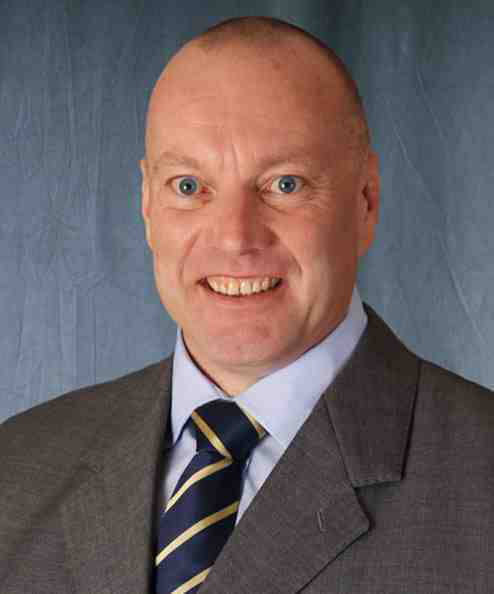Kenya on the rise: A look at the country’s business opportunities in the wake of Obama’s visit
Nairobi, Kenya – When President Obama touched down in Kenya for his historical visit, he brought with him the promise of American investments into East Africa’s infrastructure and emerging business culture. Announcing a ‘new chapter of co-operation’ with the US, the President talked about creating local jobs and ‘unleashing economic growth’ throughout Kenya and across the continent. Hopefully, his visit will enhance investor confidence and thus stimulate hesitant global organisations and private enterprises to launch local operations.

Kenya boasts one of the world’s fastest-growing economies and is on the way to becoming an economic powerhouse. The country received an extra boost this year when the US granted a ten-year extension to the African Growth and Opportunity Act (AGOA). AGOA permits the tax-free import of African-made products, and is usually renewed for smaller four-year periods. This ten-year extension gives Kenyan entrepreneurs an opportunity to kick things up a notch, and many are doubling their efforts to make the most of the unique opportunity.
The AGOA extension arrives on the crest of a wave of positive change for African economies and investments. In the past a visiting President would have brought a simple gift of financial aid, but today's leaders have learned that true success comes from the synthesis of aid and private investment. This new model has seen Britain increase its support for private investment in Africa by three-quarters of a million pounds, and a recent African Summit in Washington attracted several of America’s top business minds. Leaders of prominent companies including Walmart, GE and the high-profile private equity group Carlyle attended to discuss Africa’s wealth of opportunities, and how best to engage with them.
In Kenya, start-up entrepreneurs rely heavily on overseas investment to move forward, and there is very limited opportunity to obtain capital domestically. Small-scale businesses turn to small-scale investment engines, which focus on linking foreign investment with fledging African start-ups, providing business mentoring along the way. Large-scale and small-scale opportunities are especially noted in the following sectors:
Infrastructure
For Kenya’s economy to thrive, solid infrastructure is critical. Improved roads and ports are needed for industries like manufacturing to connect to global markets. One American multinational conglomerate corporation is currently working with the US African Development Foundation to provide electricity where it is needed.
Technology
Construction is underway on the government-funded Konza Techno City, intended to house Nairobi’s burgeoning tech scene. Known as the ‘Silicon Savannah’, the US$14bn technical complex is due to be completed in 2019, and is expected to create over 100,000 jobs. Konza will serve as an epicentre for all of East Africa’s tech business, and will house education and research hubs.
Mobile
Kenya is the home of one of the most successful mobile-based money transfer services in the developing world, allowing users to pay for coffee or rent via a mobile text. Kenyans are prolific mobile tech users, with a rapidly growing mobile penetration rate (over 31 million). Many Kenyan start-ups are geared towards mobile users.
Manufacturing
As China moves away from large-scale manufacturing, Africa is poised and ready to take over. In the Ethiopian capital Addis Ababa, the other stop on Obama’s visit, a manufacturing hub is developing in close proximity to the airport to connect local businesses to global supply chains.
Healthcare
Foreign investors are currently eyeing the country’s under-developed healthcare sector, with an emphasis on hospitals and pharmaceuticals.
As a result of this visit, the Kenyan economy has received a significant boost and it is expected that many of the global organisations and private enterprises that were in “wait and see” mode now have the impetus to press the necessary buttons. Moreover, having these companies locally launch operations is much anticipated and set to change the local landscape.
 Martin C. Pike is the Managing Director of Sub-Saharan Africa region at Pedersen & Partners. He has developed his career in recruitment and Executive Search since 1998 across the United States, Europe and Africa. Before joining the firm, Mr. Pike was with an international Executive Search firm where he transitioned from Partner to Chief Operating Officer and then the Managing Partner for Sub-Saharan Africa; prior to that he was with a FTSE 150 recruitment firm working across the USA and European markets for nearly a decade. While based in Johannesburg, Mr. Pike has gained experience across all of Africa on executive and board-level searches and has considerable experience in repatriating African talent from abroad back to local markets. Prior to his career in Executive Search, Mr. Pike started in the Financial Services sector.
Martin C. Pike is the Managing Director of Sub-Saharan Africa region at Pedersen & Partners. He has developed his career in recruitment and Executive Search since 1998 across the United States, Europe and Africa. Before joining the firm, Mr. Pike was with an international Executive Search firm where he transitioned from Partner to Chief Operating Officer and then the Managing Partner for Sub-Saharan Africa; prior to that he was with a FTSE 150 recruitment firm working across the USA and European markets for nearly a decade. While based in Johannesburg, Mr. Pike has gained experience across all of Africa on executive and board-level searches and has considerable experience in repatriating African talent from abroad back to local markets. Prior to his career in Executive Search, Mr. Pike started in the Financial Services sector.
 Sheila Mwihia is the Country Manager for Kenya and is responsible for East Africa for Pedersen & Partners. She brings over fifteen years of experience in human resource management and high level Executive Search; close to eight of those years were gained at PricewaterhouseCoopers where she was involved in diverse assignments with senior level responsibilities across the public as well as the private sector and prior was a practicing human resource management expert within the service industry.
Sheila Mwihia is the Country Manager for Kenya and is responsible for East Africa for Pedersen & Partners. She brings over fifteen years of experience in human resource management and high level Executive Search; close to eight of those years were gained at PricewaterhouseCoopers where she was involved in diverse assignments with senior level responsibilities across the public as well as the private sector and prior was a practicing human resource management expert within the service industry.
Pedersen & Partners is a leading international Executive Search firm. We operate 53 wholly owned offices in 50 countries across Europe, the Middle East, Africa, Asia & the Americas. Our values Trust, Relationship and Professionalism apply to our interaction with clients as well as executives. More information about Pedersen & Partners is available at www.pedersenandpartners.com
If you want to conduct an interview with a representative of Pedersen & Partners or have other media-related requests, please contact: Diana Danu, Marketing & Communications Manager: diana.danu@pedersenandpartners.com.
